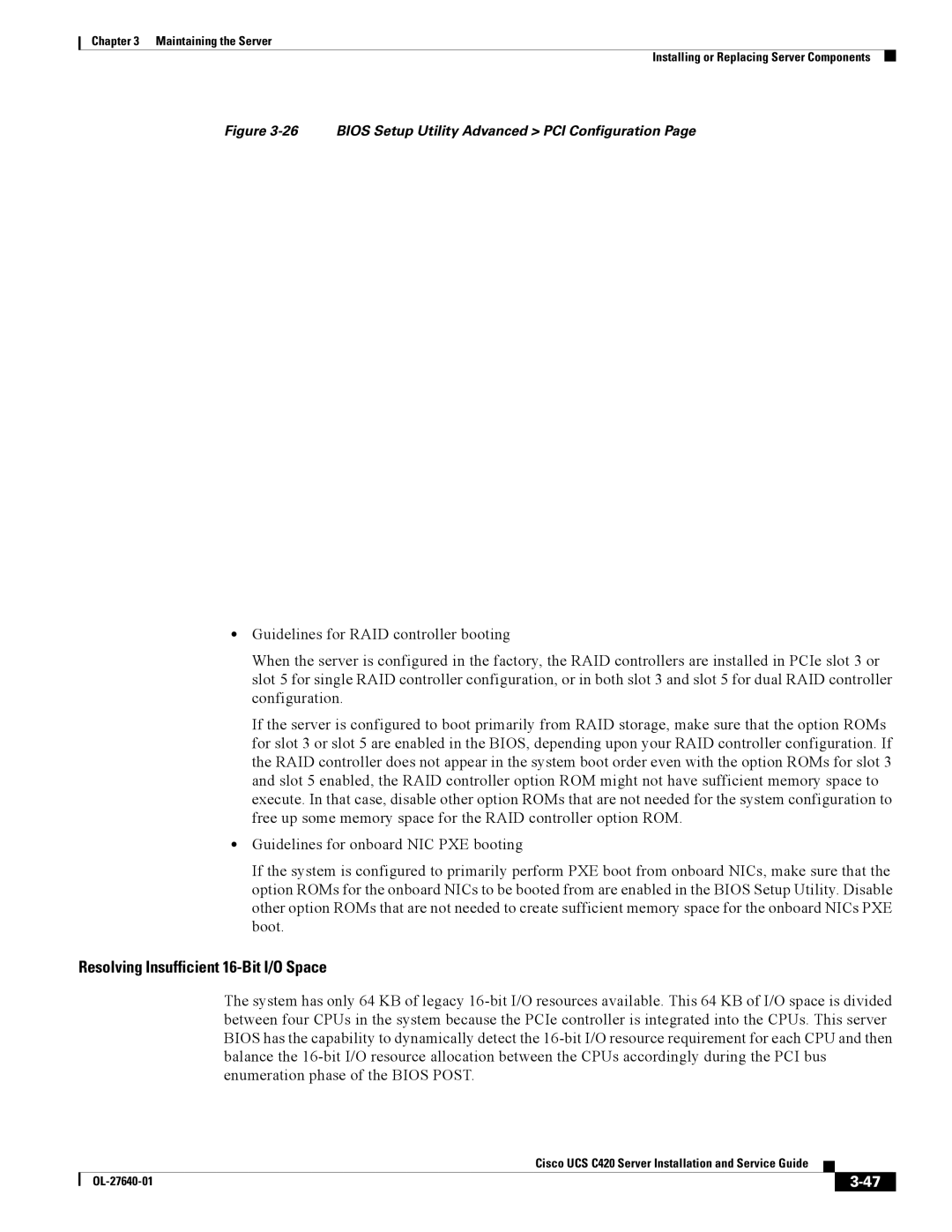
Chapter 3 Maintaining the Server
Installing or Replacing Server Components
Figure 3-26 BIOS Setup Utility Advanced > PCI Configuration Page
•Guidelines for RAID controller booting
When the server is configured in the factory, the RAID controllers are installed in PCIe slot 3 or slot 5 for single RAID controller configuration, or in both slot 3 and slot 5 for dual RAID controller configuration.
If the server is configured to boot primarily from RAID storage, make sure that the option ROMs for slot 3 or slot 5 are enabled in the BIOS, depending upon your RAID controller configuration. If the RAID controller does not appear in the system boot order even with the option ROMs for slot 3 and slot 5 enabled, the RAID controller option ROM might not have sufficient memory space to execute. In that case, disable other option ROMs that are not needed for the system configuration to free up some memory space for the RAID controller option ROM.
•Guidelines for onboard NIC PXE booting
If the system is configured to primarily perform PXE boot from onboard NICs, make sure that the option ROMs for the onboard NICs to be booted from are enabled in the BIOS Setup Utility. Disable other option ROMs that are not needed to create sufficient memory space for the onboard NICs PXE boot.
Resolving Insufficient 16-Bit I/O Space
The system has only 64 KB of legacy
|
| Cisco UCS C420 Server Installation and Service Guide |
|
| |
|
|
| |||
|
|
|
|
| |
|
|
|
| ||
